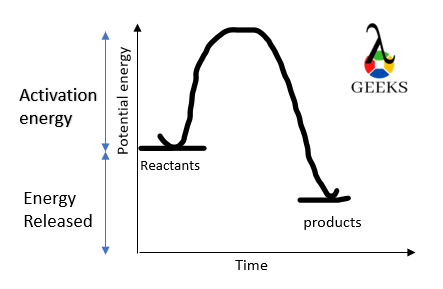H2SO3 and BaCO3 are both inorganic compounds. One is mild acid and other is base, when undergoes chemical reaction, result in formation new compounds, as follows
H2SO3 is commonly called as sulfurous acid, acts as a good disinfectant. Barium carbonate is used widely in chemical industries for manufacturing of oxides, magnetic components and fiber optical glasses. H2SO3 reacts with BaCO3 to form inorganic salts, which is highly insoluble in water but soluble in strong acids.
Reaction taking place between acid and base, their chemical properties, and how reaction takes place, is discussed throughout this article.
What type of product is H2SO3+ BaCO3
H2SO3 + BaCO3 undergo reaction to form white solid barium sulfite, along with carbonic acid. H2CO3 further break down into carbon dioxide and water.
H2SO3 + BaCO3 → BaSO3 + CO2 + H2O
What type of reaction is H2SO3 + BaCO3
H2SO3 + BaCO3 shows double displacement reaction. Swapping of bonds takes place between H2SO3 and BaCO3 giving two different products as BaSO3 and H2CO3.
How to balance H2SO3 + BaCO3
For the given reaction:
H2SO3 + BaCO3 → BaSO3 + CO2 + H2O
- We have to assign alphabetical coefficients on both side of reactions.
- A H2SO3 + B BaCO3 → C BaSO3 + D H2O + E CO2
- Expressed coefficients are used to represent, compounds in given reaction
- H = 2A + 2D, S = A+C, O = 3A+3B+3C+D+2E, C = B+E, Ba = B+C
- Enter the coefficient values into the elimination method for estimation.
- Get the smallest, whole integer values from the result by simplifying it.
- A=1, B=1, C=1, D=1, E=1
- However, there is equal number of both reactants and product are present in reaction, it is already in its balanced state.
- H2SO3 + BaCO3 → BaSO3 + H2O + CO2
H2SO3 + BaCO3 titration
H2SO3 and BaCO3 will not show acid base titration. H2SO3 being weak acid when undergo titration with weak base BaCO3 will not give any sharp changes of PH at equivalence point. However, there is no indicator, which is suitable for such composition of titration.
H2SO3 + BaCO3 net ionic equation
Net ionic equation, for given reaction H2SO3 and BaCO3 is,
H2SO3 + BaCO3 → BaSO3 + CO2 + H2O
- A molecular equation should be balanced, including the phase of every compound.
- H2SO3 (Aq) + BaCO3 (S) → BaSO3 (S) + CO2 (g) + H2O (l)
- The aqueous salts or chemicals in the equation must be transformed into ions.
- Only the strong electrolytes should be broken down because they completely dissociate.
- Here, in this reaction BaCO3 and BaSO3 are insoluble salts, which do not undergo dissociation in water.
- H2SO3 being weak acid, does not dissociate.
- Therefore, net ionic equation will remain as it is.
H2SO3 + BaCO3 conjugate pairs
H2SO3 + BaCO3 reaction has the following conjugate pairs,
- In H2SO3, after donating its H ion, the resulting compound is HSO3– act as a conjugate base.
- BaCO3 is salt, it doesn’t dissolve in water. So, it will not give conjugate acid.
H2SO3and BaCO3 intermolecular forces
H2SO3 + BaCO3 reaction has the following intermolecular forces,
- H2SO3 is covalent compound and shows van der Waals forces because of weak electrostatic forces of attraction in molecule.
- BaCO3 is ionic in nature, so it possesses intermolecular forces of attraction.
H2SO3 + BaCO3 reaction enthalpy
H2SO3 + BaCO3 reaction enthalpy is -1362.12 KJ/Mol. Enthalpies of each compound that is a reactant or a product in the reaction are as follows.
| Serial Number | Compound | ΔH KJ/Mol |
|---|---|---|
| 1 | H2SO3 | -814.4 KJ/Mol |
| 2 | BaCO3 | -1214.8 KJ/Mol |
| 3 | BaSO3 | 7.12 KJ/Mol |
| 4 | H2O | -280.7 KJ/Mol |
| 5 | CO2 | -393.5 KJ/Mol |
Enthalpy change for reaction between H2SO3+ BaCO3, Calculated by these formulae.
Change in enthalpy = addition of enthalpies of formation of product – addition of enthalpies of formation of reactant.
Enthalpy change = [(7.12) + ( -280.7) + (- 393.5)] – [( -814.4) + ( -1214.8)]
= -2029.2 – (-667.08)
= -2029.2 + 667.08
= -1362.12 KJ/Mol
Is H2SO3 + BaCO3 a buffer solution
H2SO3 + BaCO3 is a buffer solution. As a result of the reaction between a weak acid and a strong base, barium sulfite salt is produced, resulting in an acidic buffer.
Is H2SO3 + BaCO3 a complete reaction
H2SO3 + BaCO3 is not complete reaction. The formation of barium sulfite salt makes the reaction irreversible in nature. However, H2SO3 being weak acid cannot undergo 100% dissociation.
Is H2SO3and BaCO3 an exothermic or endothermic reaction
Reaction between H2SO3 and BaCO3 is exothermic in nature, because heat is evolved during reaction. In order for the reaction to proceed, more energy must be absorbed than is released when salt is formed.

Is H2SO3 + BaCO3a redox reaction
H2SO3 + BaCO3 is not redox reaction. There is no change in oxidation state of any element (H, S, Ba, O, and C). Oxidation state has been maintained throughout the course of reaction.
| Serial Number | Element | Oxidation state of reactants | Oxidation state of products |
|---|---|---|---|
| 1 | H | +1 | +1 |
| 2 | S | +4 | +4 |
| 3 | Ba | +2 | +2 |
| 4 | O | -2 | -2 |
| 5 | C | +4 | +4 |
Is H2SO3+ BaCO3a precipitation reaction
H2SO3 + BaCO3 is a precipitation reaction, because of formation of white precipitate of barium sulfite, which is insoluble in water, alcohol even in sulfurous acid.
Is H2SO3+ BaCO3an irreversible reaction
H2SO3 + BaCO3 is irreversible reaction. Formation of barium sulfite salt leads to white precipitate, thus reaction cannot be revert back forming reactant.
Is H2SO3 + BaCO3a displacement reaction
H2SO3 + BaCO3 is double displacement reaction. Ions of both reactants displace each other to form new barium sulfite, carbon dioxide and water.
Conclusion
Reaction between weak acid and base results in salt formation. It is a good example of acidic buffer solution. Formation of precipitate on course of reaction, have various uses like it is good source of ACS reagents, military grades, food, pharmaceutical grades and many more. Reaction proceeds with liberation of heat.

Hello ….I am Sana Khan. A master’s student in organic chemistry from Nagpur University. I want to share my knowledge by publishing articles.